We’ve all been told to go to school, get a degree, get a good job, work hard and save money so we can finally retire in our 60s.
But what if there was a better way? What if there was a way to get to our final destination much sooner? This book promises to show us how. In this summary, we’ll see if it lives up to the promise together.
Many people may see this book’s title and think “scam”! That is understandable. Many people who read this book and reviewed it online mentioned the title was off-putting to them, but they also said under the cover this book offers some great advice.
Unlike many success or motivational gurus, MJ DeMarco did NOT get rich selling books about success or thousand dollar motivational seminars. And in my opinion, that automatically raises him above many other authors in this genre.
Who is MJ DeMarco?
MJ DeMarco is an entrepreneur, investor and author. Today he runs the popular entrepreneur community called “The Fastlane Forum.” He lives in a large house in the mountains of Arizona and drives exotic sports cars for fun. But he was certainly not born rich.
One day when DeMarco was a kid, he visited the ice cream store and was surprised to see his dream car sitting in front of it! He asked the owner of the car (who looked no older than 30) what he did for a living. The guy replied “I’m an inventor.” This moment inspired young DeMarco and he decided that one day he would drive his own Lamborghini.
After graduating from Northern Illinois University with two degrees, DeMarco spent a few years living with his mom and pursuing various business opportunities which didn’t work out including a few multi-level marketing schemes. He worked some miserable jobs including pizza delivery boy and limousine driver. He got depressed and almost lost hope.
But one day at the limousine job he heard the idea that would make him rich. A customer asked if he knew any limousine companies available in different city. DeMarco realized many other people must have similar questions and be searching online for the answer.
So he created a website to help people find limousine services in any city. Later he also built a system to sell these website visitors as leads to limousine companies. He worked on this website for a decade, growing it into a highly successful business. Eventually he sold it for millions of dollars, allowing him to retire at 37 years old.
Many years later, he wrote The Millionaire Fastlane to help others take a similar path as him. So let’s begin the summary with the first big lesson…
🚶♂️ 1. Reject the Slowlane: There are downsides to the conventional path we’re taught by society
What guides our life? MJ DeMarco says it comes down to the roadmap that we’re following. By roadmap, he means our lifetime financial strategy and the important beliefs we hold about money, debt, education, time, etc.
The three main Roadmaps people follow are: the Sidewalk, the Slowlane and the Fastlane. Let’s discuss these one-by-one.
a) The Sidewalk
- The Sidewalk is living for today rather than the future. It means spending all the money we make as it arrives on pleasure, consumption, gadgets, fashion, trips, shiny things and endless entertainment. As a result, people on the Sidewalk usually live paycheck-to-paycheck, with a lot of debt to worry about too.
- The Sidewalk is not always about being poor. People with very high income can also be living on the Sidewalk if they are spending more than they make. This is why we sometimes hear about famous people going bankrupt just a few years after they appeared to be on top of the world.
b) The Slowlane
- The Slowlane is sacrificing today for tomorrow. This means reading personal finance books, saving 10% of our paycheck, investing in various funds, receiving compound interest, etc. Most of our society including (parents, teachers and finance gurus) tell us this is the smart way to go. It is certainly better than the Sidewalk, however…
- The Slowlane takes decades. With this roadmap, we spend most of our lives penny pinching, cutting coupons and avoiding lattes so that one day we can finally stop working. Unfortunately, by that time we’ll probably be old, bald and maybe in a wheelchair. Not exactly the dream we envisioned, is it?
- The Slowlane isn’t a sure thing. Although it is sold to us as the safe path, nothing is guaranteed here either. Many unexpected yet common life events can easily derail this strategy including health issues, divorce, market crashes, kids, etc.
- Slowlane gurus don’t practice what they preach. The financial experts and authors who teach us this strategy don’t actually use it to build their real wealth. Instead, they get rich through selling books, courses, seminars, radio shows, etc. Isn’t that ironic?
c) The Fastlane
- The Fastlane is about starting a business. Almost everybody who has gotten rich young did it through a business of some kind. (Besides a few people who are exceptionally talented or famous.) A business puts you in control of your income and provides the potential to make far more money than most annual salaries.
- The Fastlane is about retiring while you can fully enjoy it. Sure, wealth alone doesn’t make people happy, but it can help us have the things which do make us happy—like freedom, health and relationships.
- The Fastlane is NOT about getting rich easy, but it can be relatively quick. That is, if your definition of “quick” is under 10 years. MJ DeMarco often worked 12 hours a day, 7 days a week to launch his business. However, after a few years he was able to work only a few hours per week.
People follow three major roadmaps in life. The Sidewalk is living for today, spending each paycheck as it comes for pleasure and consumption. The Slowlane is sacrificing today for tomorrow, diligently saving for a comfortable retirement in 40 years. The Fastlane is building a business, working extremely hard so that in 10 years or less we can achieve total freedom.
💡 2. Produce, Don’t Consume: Create and offer value to a specific group of people, rather than just consuming
Most people live life through the perspective of a consumer, which makes them blind to the Fastlane roadmap. Being a consumer means buying products and services without any consideration about where they come from.
To start a good business, we must shift from consumer to producer. For example…
- Next time you visit a food website, don’t just read the recipe, but also notice how they make money. Is it through advertising, affiliate links or selling their own cookbook?
- Next time you buy some razors online, take note of their marketing funnel. How is their shopping cart designed? Do they offer coupons or subscription plans?
- Next time you’re buying a latte at Starbucks. How do they organize everything behind the counter? How do they hire and manage all those employees? How do they order supplies?
With this mindset, we are always learning that business strategies that are working right now in the real world. These questions can fire up our curiosity and we’ll find ourselves Googling for the answer or reading new books.
Sam Walton, the founder of Walmart, is a shining example of having a producer mindset. He was always visiting his competitor’s stores and taking notes about everything they were doing in a little yellow notepad. Later he incorporated their best ideas into his own stores. This is a big reason Walmart became such a mega-success.
Read more in our summary of Sam Walton’s autobiography Made in America
Eventually we also need to switch our actions to production rather than consumption. Demarco says:
Applied, this means instead of buying products on TV, sell products. Instead of digging for gold, sell shovels. Instead of taking a class, offer a class. Instead of borrowing money, lend it. Instead of taking a job, hire for jobs. Instead of taking a mortgage, hold a mortgage. Break free from consumption, switch sides, and reorient to the world as producer.
Most people are consumers, they buy things without thinking where they came from. Instead, we must become producers, by studying the businesses around us and by eventually offering our own products and services to the world.
👣 3. Work the Process: Wealth building is not a one-time event, but a gradual step-by-step journey
“Get rich quick” schemes are popular because they sell the idea of getting wealthy as an event. In other words, they say we can do this one thing to become successful. It’s always related to whatever topic feels new and exciting to people at the time:
- 20 years ago it was buying real estate with no-money-down or buying tech stocks during the dot com bubble.
- 5 years ago it was making money blogging or using Facebook Ads.
- Today it may be buying Bitcoin or drop shipping products on Amazon.
However, building a profitable business is a multi-step process, not a one-time event. It’s not like winning a lottery, but more like building a house from the ground up, block-by-block. So it usually takes years of boring work and risk-taking.
For example, DeMarco spent hundreds of hours reading dry books about coding websites. It was a critical step in his own process. Without this step he couldn’t have gotten rich. And even once his website was making money, he continued to endlessly learn new technologies so he could improve it and grow his business further. Process, process, process.
The most popular book for founders of technology startups is The Lean Startup by Eric Ries. Eric Ries co-founded a virtual 3d social network called IMVU which is used by tens of millions of people. He says most startups fail because they build a product nobody wants! So he created a process for finding out what our customers want as fast as possible through small experiments.
In his book, Eric Ries wrote, “What differentiates the success stories from the failures is that the successful entrepreneurs had the foresight, the ability, and the tools to discover which parts of their plans were working brilliantly and which were misguided, and adapt their strategies accordingly.”
Most people see getting wealthy as an event, like winning the lottery. However, building a profitable business is a process that takes multiple steps and ingredients, sort of like building a house. We must embrace the boring yet essential parts of the process.
🖐️ 4. The Five Commandments: Build a business focusing on control, entry, need, time, and scale
If you want a business to make you wealthy, then you must start one with the potential to make you wealthy. Sounds obvious, right? Yet many people open businesses which put them in a worse situation than a 9-5 job! They work longer hours, with more stress, and without any future plan to grow bigger.
So DeMarco created 5 commandments that can tell us whether a business opportunity is good. Let’s go through them one-by-one.
1) The Commandment of Control
You must control your organization, product and pricing. If you do not, then you don’t really have a business. Rather, you’ve become part of someone else’s business. This makes you vulnerable to their future decisions, which means they could easily change some part of the contract and ruin all that you’ve built.
Many so-called “business opportunities” don’t give you control. This includes multi-level-marketing (MLM), affiliate marketing or drop-shipping products. Yes, some people who follow these strategies can make good money. However, they make far less than those who start the MLM company, offer an affiliate program, or get others to drop-ship their product.
2) The Commandment of Entry
You must start a business that has a high barrier to entry. This means it takes multiple complicated steps to launch the business. For example, Mark Zuckerberg programmed Facebook from scratch. Right away, there’s a barrier to entry because only a small percentage of people can code.
When a type of business looks like it’s easy to start, then masses of people rush towards it. Paradoxically, this makes the “easy” business types extremely competitive. You have to be really exceptional to get ahead of all the other beginners doing exactly the same thing as you. Right now this may include currency trading, making money through Amazon and more.
3) The Commandment of Need
Businesses that succeed are started to fill a need for others. They are focused on service. The harsh truth is most people don’t care about what you love. They pay money for solutions to their problems. All of us are primarily concerned with “what’s in it for me?”
Most businesses fail because they are started for selfish and narcissistic reasons. Yes, we often hear advice like “do what you love and the money will follow,” but this is simply disconnected from reality.
People care about what your business can do for them. How will it help them? Will it solve their problem? Make their life easier? Provide them with shelter? Save them money? Educate them? Make them feel something? Tell me, why on God’s green Earth should I give your business money? What value are you adding to my life? […] To succeed as a producer, surrender your own selfishness and address the selfishness of others.
In the book The Psychology of Selling, author Brian Tracy makes a similar point. He says salespeople who fail talk too much about their product, including its features, specifications and supposed “quality.” The salespeople who succeed focus on the product’s utility. They recognize the prospect doesn’t care about your product at all, but only what it will do for them.
This means we shouldn’t just mention a feature, but we need to explain the benefits—how their life will be better as a result of this feature. For example, don’t say “this shovel is made of steel” but “this shovel will last twice as long as others because it’s made of steel.”
Learn more in our summary of The Psychology of Selling by Brian Tracy
4) The Commandment of Time
To become free, we must disconnect our income from our time. This means creating business systems that can run without us. A few years into his limousine website business, MJ DeMarco achieved this through automating and systematizing all the processes in his business.
Most people get paid based on how long they work. If they don’t work today, then they don’t get income. Many business owners are stuck in the same trap because they always need to be present for their business to function.
5) The Commandment of Scale
Choose a business that has the potential to grow big. The more people you can possibly reach with your business, the more you’ll make.
Owning one local coffeeshop or sandwich restaurant won’t make you rich because there’s a basic limit to how many customers you can serve daily. (Unless you want to open up many individual locations.) On the other hand, the internet is fantastic for growth potential because from the first day you have access to a worldwide marketplace.
Many businesses offer less freedom and wealth potential than a job. A good business opportunity must: put you in control, have a high barrier to entry, be based on other people’s needs, be disconnected from your time, and have the potential to scale.
🌍 5. Affect Millions: The greater your impact on people, the higher your potential earnings
People become millionaires and billionaires when they impact people’s lives on a great scale or with great magnitude. (MJ DeMarco calls this the “Law of Effection.”)
- Scale means affecting a large number of people. For example, Stephen King selling millions of $10 books turned him into a millionaire.
- Magnitude means affecting people’s live in a strong way. For example, a local condo developer sells 100 condos that cost $300,000 each. He affects a few people, but with huge magnitude so he can also become a millionaire.
When you are building a successful business, the game is to increase the scale and/or magnitude of your impact. This is summarized neatly in DeMarco’s profit equation:
Net Profit = Units Sold (Scale) × Unit Profit (Magnitude)
When DeMarco was growing his website, his primary goal was to increase those two numbers on the right: units sold and unit profit. Both are within your control to an extent. For example, he could increase units sold by attracting more visitors to his website or improving the conversion rate of visitors to buyers. How? Well, he spent his time learning new web technologies like search engine optimization and experimenting with new website designs.
Successful business owners impact people’s lives with scale and/or magnitude. Scale means affecting a large number of people, usually through getting more customers. Magnitude means affecting people in a strong way, usually through focusing on higher margin products.
🌳 6. Grow Money Trees: Develop a business that works without your involvement
You need to separate your income from your time spent working. You can do this through building business systems that work without your continuous presence. MJ DeMarco details five types of businesses which are well suited for this:
- Rent-based businesses – Including real estate, licensing your ideas or earning royalties from books, music, etc.
- Computer and Software businesses – Including blogs, communities, e-commerce, advertising, subscriptions, apps, etc.
- Content businesses – With the internet, it’s easier than ever before to self-publish. Once you’ve created some content online, it will remain there for years working for you.
- Distribution businesses – Amazon, retailing and franchising all serve to distribute products. Getting products out to people can be as important as making the product.
- Employee-run businesses – However, it can become time-consuming to manage too many employees. This is one of the biggest reasons DeMarco eventually sold his business.
Finally, the best money tree is money itself. Earning interest from your savings and investments is the only truly passive income. This is how DeMarco was able to retire in his 30s. After selling his business for millions, he invested the money and now earns interest from it. For example, if someone saved $1,000,000 and earned 4% interest from it, then they would make $40,000 per year doing absolutely nothing.
To divorce your time from your income, you must use business systems. These include rent-based, computer/software, content, distribution and employees. Yet the best source of passive income is earning interest from money itself.
🚀 7. Execute Better: Focus on the quality of your execution, over originality in your idea
MJ Demarco had the idea for his limousine website and became excited. Then he looked online and saw a dozen people already doing it! (Most aspiring entrepreneurs will have an identical experience.) He almost gave up, but his friend gave him some great advice. She said there is competition no matter what you do, so just do it better than the rest. So that’s what he did.
Excellent execution allowed his website to surpass all the existing ones. It also let him stay ahead of new competitors, despite them trying to copy everything he did.
Great businesses take an old idea and execute it better. Before Google, there were plenty of search engines. Before Facebook, there were plenty of social networks. Before Starbucks, there was no shortage of coffee shops. But they took those old ideas and executed in a way that fit people’s needs better.
Three tips for better execution:
- Commit yourself 100% to one project. People who spread themselves out over multiple business ideas end up doing none of them well. Demarco calls this monogamy over polygamy.
- Keep track of all customer complaints. Most business owners just want complaints to disappear, but they can be a goldmine. Your customers can be the source of many new ideas to help you improve and stay ahead of competitors.
- Find your Unique Selling Proposition (USP). This is how you answer the question, “Why should they choose you over the competition?” If you don’t offer something different, special or unique, then you will be forced to compete by lowering prices (which is bad). For example, Domino’s Pizza became popular fast by making the unique promise their pizza would be “Delivered within 30 minutes or less, or it’s free.”
Most business ideas have been done already, but that’s okay. The important thing is to execute better than the existing competition. You can do this by fully committing to one project, adapting based on customer complaints and finding your unique selling proposition.
Conclusion
Wow, there is some fantastic advice to guide aspiring entrepreneurs in this book! I hope you’ll take DeMarco’s wisdom and use these ideas to avoid many of the roadblocks that stop other ambitious people from achieving their desires. (Whether those desires include Lamborghinis or not!) My personal favourite part of this book was the focus on serving other people’s needs rather than thinking about what we want all the time.
—
Updated Dec 2023: Extra fields for ‘best books’ pages, lesson titles.





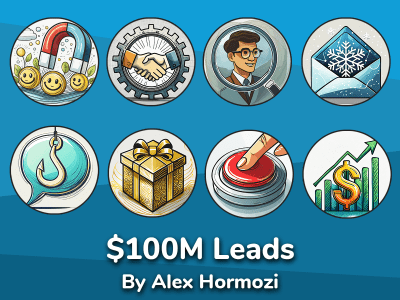


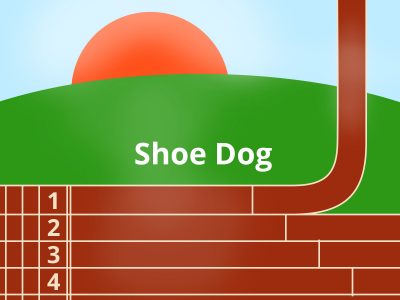
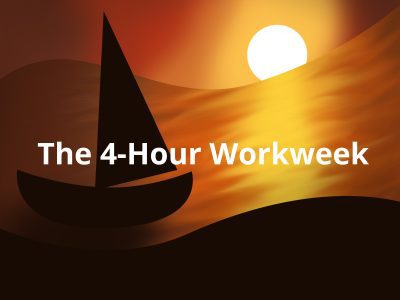
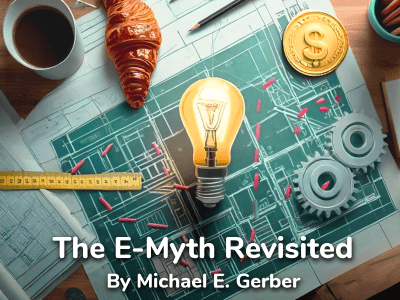
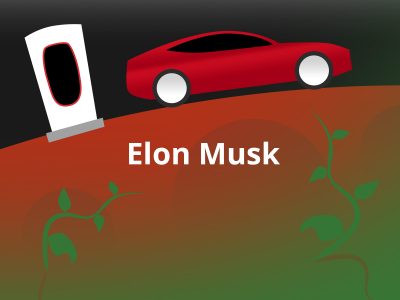









Community Notes